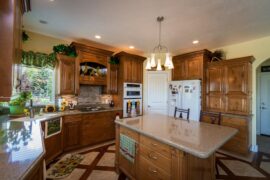Remodeling a basement holds tremendous potential, often morphing an underutilized space into a home theater, a productive office, a playful game room, or an additional bedroom. However, basement remodels come with a distinct challenge – unwanted noise. Soundproofing, while seemingly costly, can be achieved on a budget with careful planning and strategic material choices. This guide provides affordable solutions for soundproofing your basement walls, ensuring a peaceful and enjoyable living area. Basement soundproofing is an often overlooked aspect of any basement reno, but is absolutely essential in maximizing comfort.
Understanding the Basics of Soundproofing: Noise Reduction Coefficient (NRC) and Sound Transmission Class (STC)
Before tackling the project, get to know the science of sound. Soundproofing, as different from sound absorption, is about preventing sound from entering or leaving a space. To judge the effectiveness of soundproofing materials, two primary metrics are used:
-
Sound Transmission Class (STC): STC measures how well a building partition attenuates airborne sound. The higher the STC rating, the better the material is at blocking sound. Residential walls typically have an STC rating of 30 to 50. Aim for an STC rating as high as you can comfortably afford within your budget. A rating of 50 or higher provides good sound isolation, suitable for home theaters or music rooms. Think STC in terms of the overall effectiveness in sound isolation.
-
Noise Reduction Coefficient (NRC): NRC indicates how much sound energy a material absorbs. A higher NRC rating means more sound absorption and less reflection. Materials with high NRC are useful for reducing echo and reverberation within a room. This is particularly useful in basements where hard surfaces contribute to noise issues. This is how the sound bounces within your home.
When working on your basement remodeling, it's very important to know these terms.
Affordable Soundproofing Materials and Techniques
Soundproofing doesn't necessitate a bankrupting expense. Several cost-effective options deliver significant results when combined correctly. When constructing a basement bedroom, there are some building code requirements on things like emergency exits, and fire safety requirements, but beyond that, consider some of these options.
1. Mass Loaded Vinyl (MLV): A Sound Barrier Workhorse
MLV is a dense, flexible material that acts as a sound barrier. It's hung directly on the wall studs before drywall installation.
- Benefits: Highly effective at blocking sound transmission, relatively thin and easy to install.
- Cost: $2 – $4 per square foot. Shop around, prices will vary, this makes a big difference when considering the total budget.
- Installation Tip: Overlap seams by a few inches and seal with acoustic caulk for optimal performance. Don't use any old caulk you found in the garage, acoustic caulk will make a difference.
2. Resilient Channels: Decoupling for Sound Isolation
Resilient channels are metal strips that decouple the drywall from the wall studs, reducing sound transfer. They are screwed horizontally across the studs and drywall is then attached to the channels.
- Benefits: Creates an air gap that interrupts sound vibrations, significantly improving STC rating.
- Cost: $1 – $2 per linear foot. It's worth noting, that there are different types, so do your research.
- Installation Tip: Don’t short screws! Ensure screws only penetrate the resilient channel and drywall. Avoid hitting the studs behind. This is a common error that negates the benefits.
3. Soundproof Drywall: Dense and Dampening
Specialized drywall products, like CertainTeed SilentFX or National Gypsum SoundBreak, incorporate a dampening layer to reduce sound transmission.
- Benefits: Denser than standard drywall, offering enhanced sound dampening. Easy to install like regular drywall.
- Cost: $30 – $50 per sheet (4×8 feet). This can definitely eat into your budget quickly!
- Installation Tip: Pair with acoustic caulk along edges and seams for a sealed sound barrier. Don't forget the edges!
4. Acoustic Insulation: Filling the Cavities
Insulation is the first line of defense. While standard fiberglass insulation offers some sound absorption, mineral wool or dense-packed cellulose provides superior performance.
- Benefits: Fills wall cavities, reducing sound resonance and improving overall STC. Mineral wool is also fire-resistant.
- Cost: $0.50 – $1.50 per square foot. Blown-in insulation needs some equipment, so consider these factors.
- Installation Tip: Ensure insulation completely fills the cavity without gaps. Overfilling can compress the material and reduce its effectiveness, while underfilling creates air pockets that allow sound to travel freely. This is particularly important if you have a home theatre system.
5. Sealing Air Gaps: Acoustic Caulk and Weatherstripping
Air gaps are sound's best friend. Sealing any cracks or openings with acoustic caulk is a low-cost, high-impact strategy.
- Benefits: Prevents sound leakage through cracks around outlets, pipes, and windows. Weatherstripping seals gaps around doors.
- Cost: Acoustic caulk: $10 – $20 per tube. Weatherstripping: $5 – $15 per door/window.
- Installation Tip: Apply acoustic caulk liberally to all seams, edges, and penetrations. Ensure weatherstripping creates a tight seal when doors and windows are closed. Seal around pipes, electrical outlets, light fixtures.
6. Heavy Curtains and Rugs: Acoustic Treatments for Existing Walls
Even if you're not doing a full wall remodel, adding heavy curtains and rugs can significantly improve the acoustics of the space.
- Benefits: Absorb sound reflections, reducing echo and reverberation.
- Cost: Varies widely depending on material and size. Shop around for sales and discounts.
- Installation Tip: Choose thick, multi-layered curtains that extend to the floor. Use rugs with thick padding for maximum sound absorption. If you go with rugs, make sure to buy good quality padding – don't cheap out here.
7. DIY Acoustic Panels: Affordable Sound Absorption
Building your own acoustic panels is a budget-friendly way to improve sound absorption.
- Materials: Wood frames, fabric (burlap, felt), sound-absorbing material (mineral wool, fiberglass).
- Cost: $20 – $50 per panel. The price really depends on how fancy you get.
- Installation Tip: Place panels strategically on walls and ceilings to absorb sound reflections. Experiment with placement to find the best acoustic balance. Don't be scared to experiment with different colors and materials.
Strategies for Budget-Conscious Soundproofing
It's important to know how to manage your budget and what to do when doing your basement remodels.
1. Prioritize Soundproofing Needs
Identify the primary sources of noise and focus your efforts accordingly. Is it external noise from outside, or internal noise from a home theater or workshop? If sound from above is a problem, you may need to also consider soundproofing the ceiling of the basement space as well.
2. Phased Approach
If your budget is tight, tackle the project in phases. Start with the most critical areas, such as the walls shared with noisy spaces.
3. Shop Around for Materials
Compare prices from different suppliers. Look for sales, discounts, and used materials. Also, don't buy all your materials from one store! It may be more convenient, but it's rarely the best price.
4. DIY Where Possible
Do-it-yourself projects, like building acoustic panels or installing insulation, can save you significant labor costs. Do your research!
5. Maximize Existing Structure
Take advantage of existing features. For example, if your basement walls are concrete, they already offer some sound blocking. Focus on sealing air gaps and adding absorption materials. This can also affect your overall cost.
6. Consult Experts (Sparingly)
A brief consultation with an acoustic consultant can provide valuable insights and prevent costly mistakes. A good consultant can help you determine the best strategies for soundproofing your basement within your budget. Most consultations will involve the consultant assessing the existing conditions, and providing detailed advice as to what you should do to achieve certain results.
7. Check Local Building Codes
Depending on your locality, soundproofing might have regulations particularly when converting a basement into a living space, or a soundproofed music studio. These might encompass minimum STC ratings for walls, or ventilation prerequisites to forestall air quality issues resulting from sealed spaces. In addition, being aware of the local construction codes will help you plan properly and avoid any penalties.
Installation Considerations
How you install the materials is a significant part of any project.
1. Safety First
Always wear appropriate safety gear, including gloves, masks, and eye protection, when handling insulation and other materials. Wear appropriate clothing, don't wear loose clothing, as this could be a safety issue!
2. Accurate Measurements
Accurate measurements are important, and so is precision. Double-check all measurements before cutting materials to minimize waste and ensure a proper fit.
3. Proper Ventilation
Ensure adequate ventilation during and after installation to prevent moisture buildup and promote air quality.
4. Acoustic Caulking Technique
Apply acoustic caulk liberally and evenly to all seams, edges, and penetrations for an airtight seal.
5. Resilient Channel Installation
Avoid short screws. Use the correct screw length to prevent contact with the studs behind the resilient channels.
Case Studies of Budget-Friendly Basement Soundproofing
To illustrate the practical application of these techniques, here are a couple of examples.
-
Case Study 1: Home Theater Soundproofing: A homeowner on a tight budget used MLV on the walls, resilient channels for the ceiling, and DIY acoustic panels to create a soundproof home theater. The total cost was under $1,000, and the sound isolation was significantly improved.
-
Case Study 2: Basement Music Studio: A musician transformed their basement into a practice space by adding mineral wool insulation, soundproof drywall on one shared wall, and heavy curtains. They also built DIY bass traps for corner placement. This combination significantly reduced noise transfer to the rest of the house.
Ongoing Maintenance and Troubleshooting
Soundproofing is not a one-time fix; maintenance may be required to keep everything working correctly.
1. Regular Inspections
Periodically inspect caulking, weatherstripping, and seals for any cracks or deterioration.
2. Address Leaks Promptly
Fix any water leaks immediately, as moisture can damage soundproofing materials and reduce their effectiveness.
3. Adjust Acoustic Panels
Experiment with the placement of acoustic panels to optimize sound absorption and reduce echo.
4. Evaluate Noise Complaints
If noise issues persist, identify the source and consider additional soundproofing measures.
Long-Term Considerations and Potential Upgrades
Soundproofing is an investment, but it also offers long-term value for the home!
1. Future Expansion
Plan for future soundproofing upgrades when budget allows. Consider adding a second layer of drywall or upgrading to higher-rated soundproofing materials.
2. Home Value
Soundproofing can increase the value of your home, particularly if the basement is used as a living space or home theater.
3. Energy Efficiency
Many soundproofing materials, such as insulation, also improve energy efficiency, saving you money on heating and cooling costs.
Final Thoughts on Affordable Basement Soundproofing
Soundproofing a basement on a budget is achievable with careful planning, strategic material choices, and a bit of elbow grease. By understanding the principles of sound isolation and absorption, and by following the tips and techniques outlined in this guide, you can create a peaceful and enjoyable basement space without breaking the bank. A strategic approach can lead to a basement that's not only functional but also a comfortable, quiet retreat. By combining materials like MLV, resilient channels, and proper acoustic insulation, sound leakage can be dramatically reduced, creating a space where noise doesn't impede on the quality of life.





